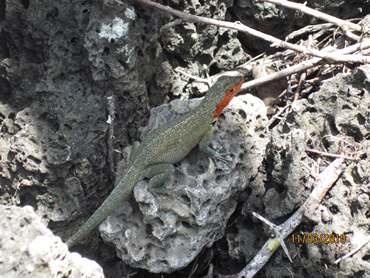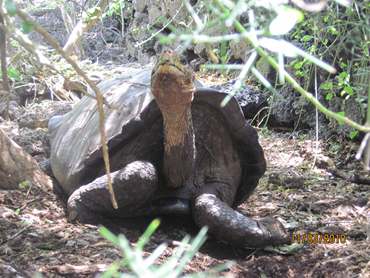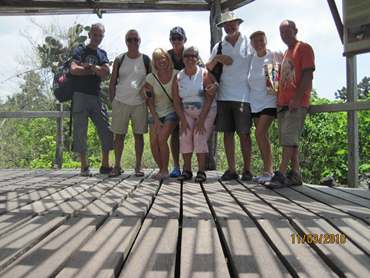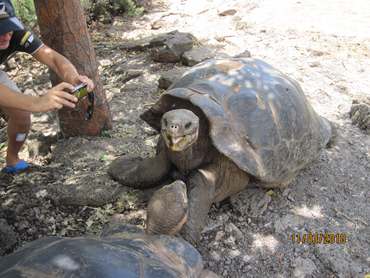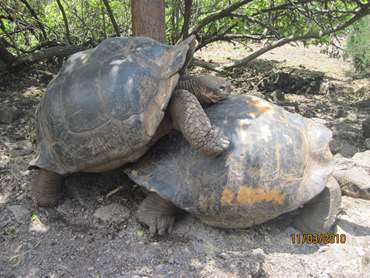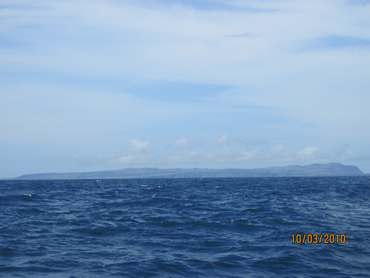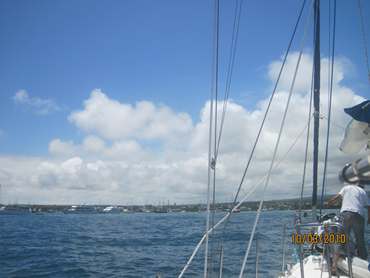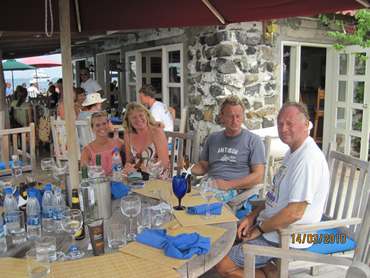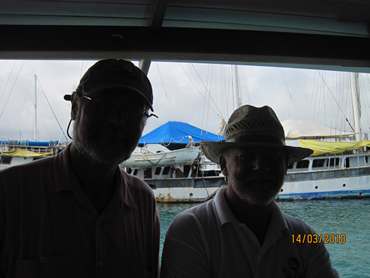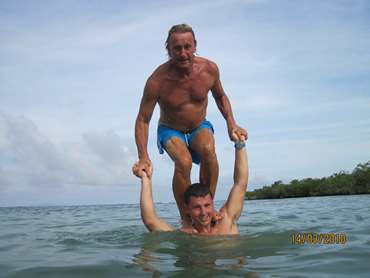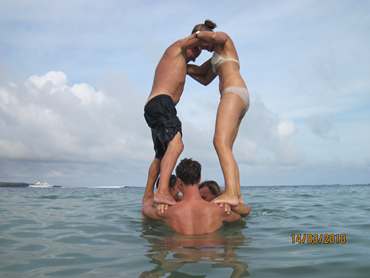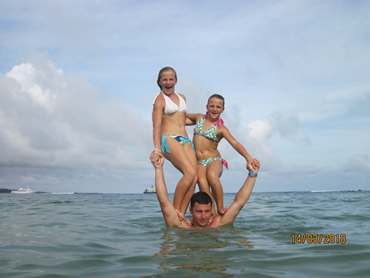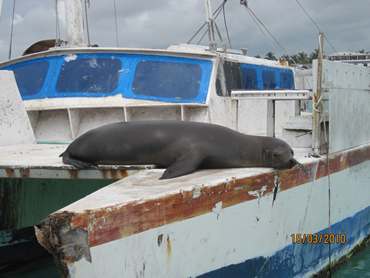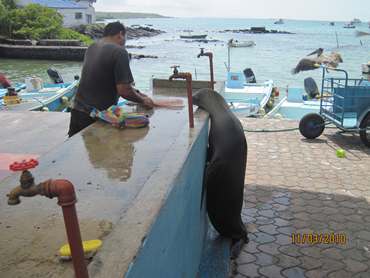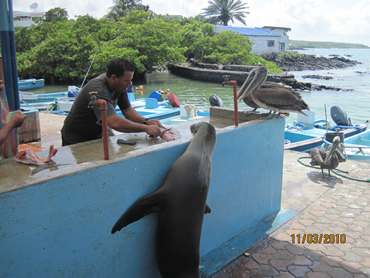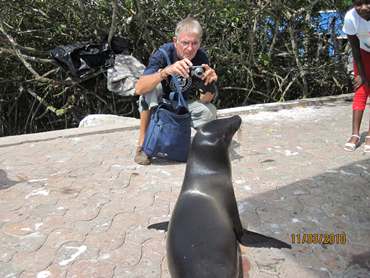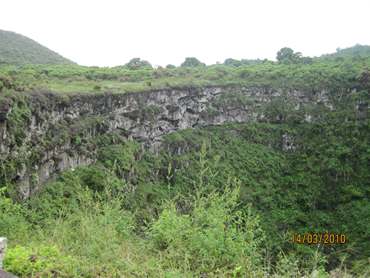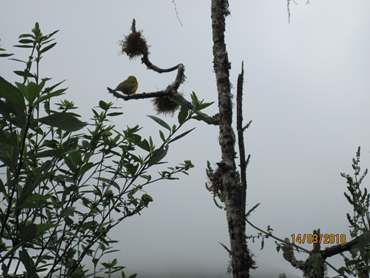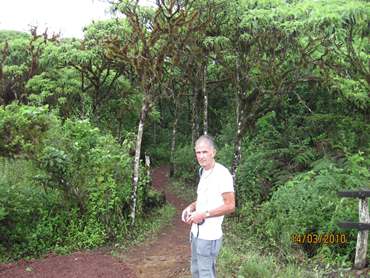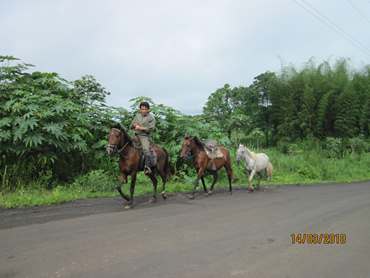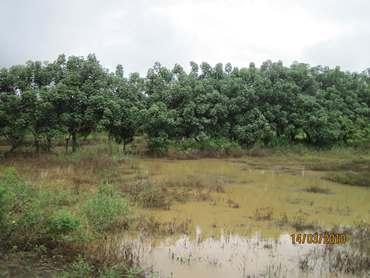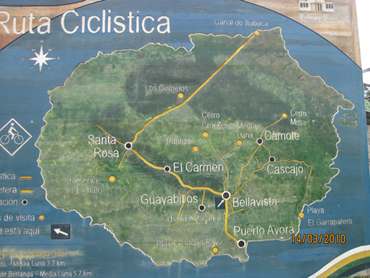Fai Tira In Santa Cruise. Galapagos 0:44.81S 90:18.47W Monday 15th March

|
Fai Tira Blog Monday 15th March Fai Tira In Santa Cruise. Galapagos
0:44.81S 90:18.47W Well we’ve now been in the
Galapagos for four days and it’s brilliant. We’d both tried to get
a feel for the place by reading up on the way across, So we knew some of the
history. Like the fact that the islands were accidently discovered by Tomas De
Berlanga, the Bishop of Panama. In 1535, whilst on his way to Peru: his ship
was becalmed and swept 800 miles off course by currents. Both he and a thirsty
crew were disappointed by the apparent dryness of the place and left without
even giving it a name, although he did call the giant tortoises Galapagos
because of the similarity of their shells to the shape of the Spanish riding
saddles. We also knew that they provided temporary haven to a bunch of,
considerate, English pirates that plied these waters seeking to offload the
Spanish of some of their burdensome cargo of gold. And we also knew that they remained
uninhabited until 1807 when Floreana was then occupied by a lone Irishman by
the name of Patrick Watkins (They do have particularly good potatoes here!!!)
and of course. Thanks’ to Charles Darwin, we had some idea about the
evolution of species
However, no matter how much we’d read, we were never
going to be prepared for the abundance of wild life with an apparent total
acceptability of human beings, at a level almost verging on that of contempt. At this stage though, and before I go any further, I feel
the need to apologise. It’s only just occurred that our last blog might
just have arrived as people were about to indulge in the consumption of food
and if that is the case, the ensuing shock, caused by the photos, could have
done untold and possibly permanent damage to their eating habits and digestive
systems. Anyhow, that out of the way back to the Galapagos. We first
caught sight of land around mid day on Thursday and it was the 10th
of March. We’d motor sailed down on a more Southerly course, for short
while, in an endeavour to give ourselves a more favourable run in and break
away from the interminable close hauled sail configuration that had been
providing us with such laborious and, at times, tedious progress. It worked well and we approached on a beam reach making
about 5 knots, although we now found ourselves affected by the vagaries of wind
deflection and acceleration, caused by the adjacent land masses. Surprisingly the first island to come into view was our
final destination Santa Cruise. Whilst the seemingly nearer and smaller one,
San Cristobel, lurked under a shroud of mist somewhere off to our port side.
It was an odd sensation, to at last catch sight of this, almost
mythical, place. Somewhere that had for a long time felt like one of the
important milestones of the holiday, oops I meant journey, no, sorry that
should have been adventure. Anyhow it wasn’t long before we were to get a taste of
what was to come. We were still 25 miles off and still looking for sight of
land, when a head popped out of the water to the stern of the boat, and we were
subjected to a quick scrutiny by a seal, before it disappeared silently beneath
the waves. I suppose you could say, at that point we were given the seal of
approval (Sorry I think I lied when I said that in future I’d leave all
the crap jokes to Pete) Also within the next short period Pete said that he’d
caught sight of the fins of a white tipped shark, all this activity, what a
great prelude. As the Island became clearer, the silhouette gave
confirmation of its volcanic origins, shortly to be backed up when we entered
the lava rock faced surroundings of the natural bay at Puerto Ayora, where we
would be at anchor for the next 2 weeks. After 6 days at sea we were eager to get ashore so with the
boat quickly secured and with the aid of one of the numerous water taxis, we
found ourselves standing on the island. The first impact was of the vibrant colours of the clothes
and the predominance of red, but by far the greatest impact was the co-
habitation of the wild life. This is a bustling, If small, town, and, straight
away, there were seals laying around within touching distance and lizards and
small iguanas in the most unexpected places. Even the flies are tame (you just
can’t shake the bloody things off) . After a quick watch of the local teams playing volley ball
(must be their national sport) in what would pass as the town square, we made
our way to the Rock Bar and met with the other BWR guys for a big catch up.
This bar was to be the central meeting place for the rest of the stay.
During the course of the next few days we visited the Darwin
Centre (more about that later), Pete went diving, I made an early morning trip
to the brilliant fruit market, we took a taxi ride to the highest point of the
island with our bikes explored and cycled back, had a few really good and cheap
meals in the area known as the kiosks, had an official BWR lunch and swim at
the adjacent beach with the rest of the crews and are now anticipating our
organised cruise on the boat Daphne starting in 2 days time.
Below are pictures taken at the fish market with some of the
local wildlife.
I must just say a few quick words about the market and bike
ride. The market is weekly, on a Saturday and starts at the
unsociable hour of 5am. I arrived at about 7.30 not really knowing what to
expect, I kind of thought that it would be quite small and low key. Those
illusions were quickly dispersed. It was big, well supported, massively
colourful, bustling, noisy, smelly and atmospheric......Brilliant. I stayed for most of the morning, had breakfast, took some
photos of interesting faces, did some sketching and even managed to miss the
Ireland Wales Six Nations match in the process, it was being broadcast in the
Rock. Did manage to see the England game, but shouldn’t have bothered. The bike ride was great. The highlights being the trip down
to the tortoise viewing point where we were able to see them in the wild, the
huge sink holes, the lush surrounding vegetation and rain forest with its
unique variety of trees and the little village not far from the main town that
I propose to go back to,,,,,,, and just sit.
So there we are onwards and upwards to the next bit of
excitement. If you want to get a taste of what we’ve got to look forward
to, on our cruise, have a look at the following Itinerary. Bye for now Pete and John. YACHT DAPHNE
– ITINERARY Day 1 Wednesday: - Bachas/
Baltra Island Day 2 Thursday:
Plazas South - Santa Fe Day 3 Friday: Española Island-Punta Suarez-Gardner Bay Day 4 Saturday: Floreana - Pto. Cormorant / Devil's crown
/ Post Office Bay Day 5 Sunday: Santa Cruz – Highlands and return to
Puerto Ayora |
